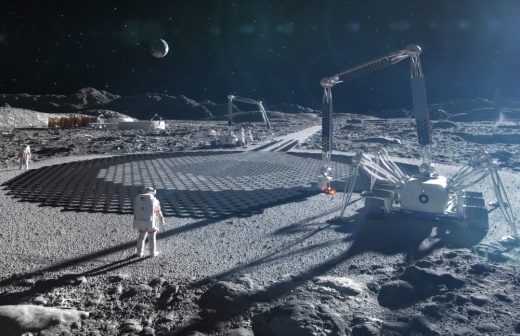Icon was awarded the contract under Phase 3 of NASA’s Small Business Innovation Research program, which offers funding to companies to research and develop technology that aligns with the agency’s mission needs.
Icon's Project Olympus is meant to create a multipurpose construction system using lunar and martian resources as building materials to help establish a sustained presence on the moon.
“We’re pleased that our research and engineering to-date has demonstrated that such systems are indeed possible, and we look forward to now making that possibility a reality,” Icon co-founder and CEO Jason Ballard said in a Nov. 29 release. “The final deliverable of this contract will be humanity’s first construction on another world, and that is going to be a pretty special achievement.”
The company is in the process of constructing 100 homes using its large 3D printers in Georgetown’s Wolf Ranch community. Meanwhile, Icon has been researching and developing the technology for the moon at its Project Olympus Strategic R&D Laboratory in Austin.
Melodie Yashar, vice president of building design and building performance, said despite the fact designing structures made for Earth and in space “present wildly different constraints, they still require thorough investigation of how we use local materials, establish measures of resilience and more.”
“Automated construction in the harsh and extreme environmental conditions on the moon will bring back value for nearly every aspect of our development of the technology here on Earth,” Yashar said in an email. “Building humanity’s first home on another world will be the most ambitious construction project in human history and will push science, engineering, technology and architecture to literal new heights.”
The homes Icon builds on Earth are supposed to be more energy efficient and stronger than traditional houses. To survive on the moon, though, structures need thermal, radiation and micrometeorite protection.
“Just like early civilizations, we will use in-situ regolith, commonly referred to as dirt or moon dust and other resources that are local and indigenous to the moon and combine them with binders and additives that we bring from Earth to produce high-performance construction materials and in turn structures that will eventually be occupied by future generations,” Yashar said.
NASA has signaled its Artemis program will be the first off-Earth site for sustainable surface exploration and surface construction. Icon's goal is to have its robots on the lunar surface by 2026 but will adjust to the Artemis timeline. Within the decade, both entities hope to have infrastructure, such as roadways and landing pads, on the moon.





